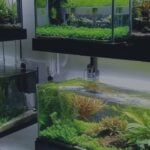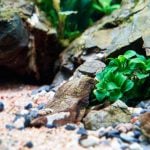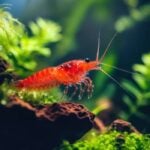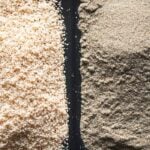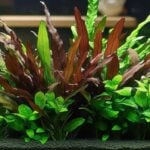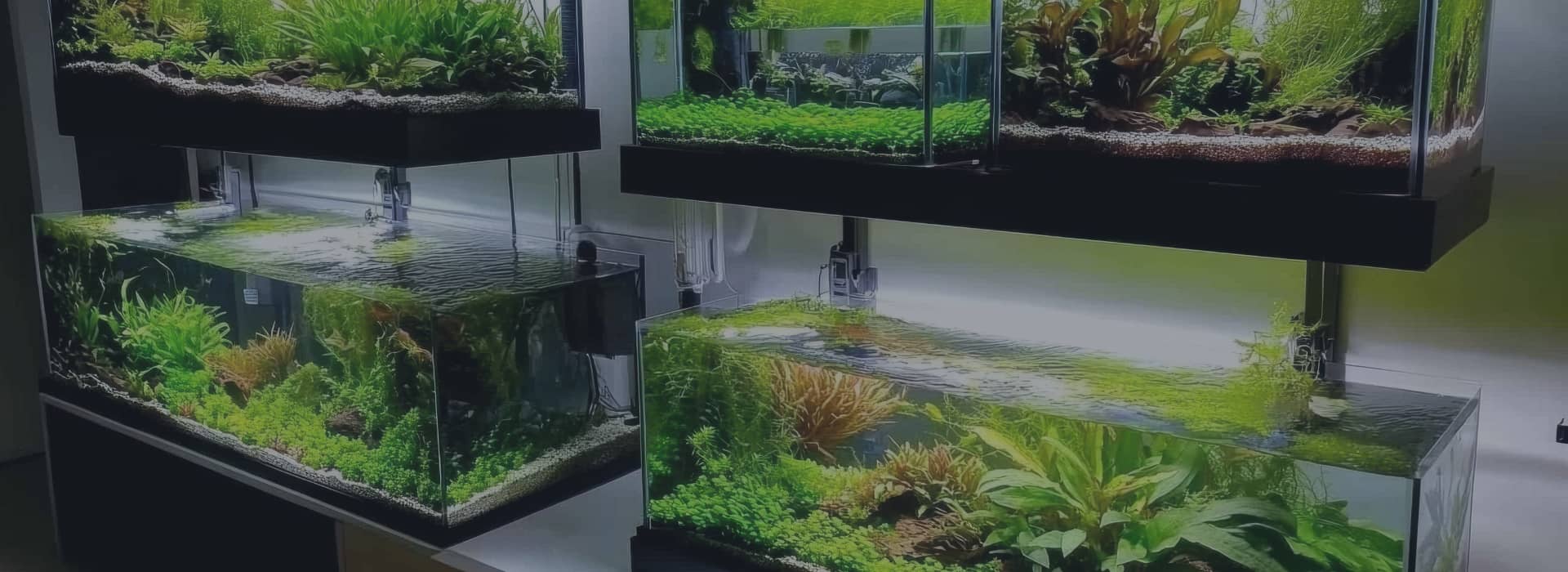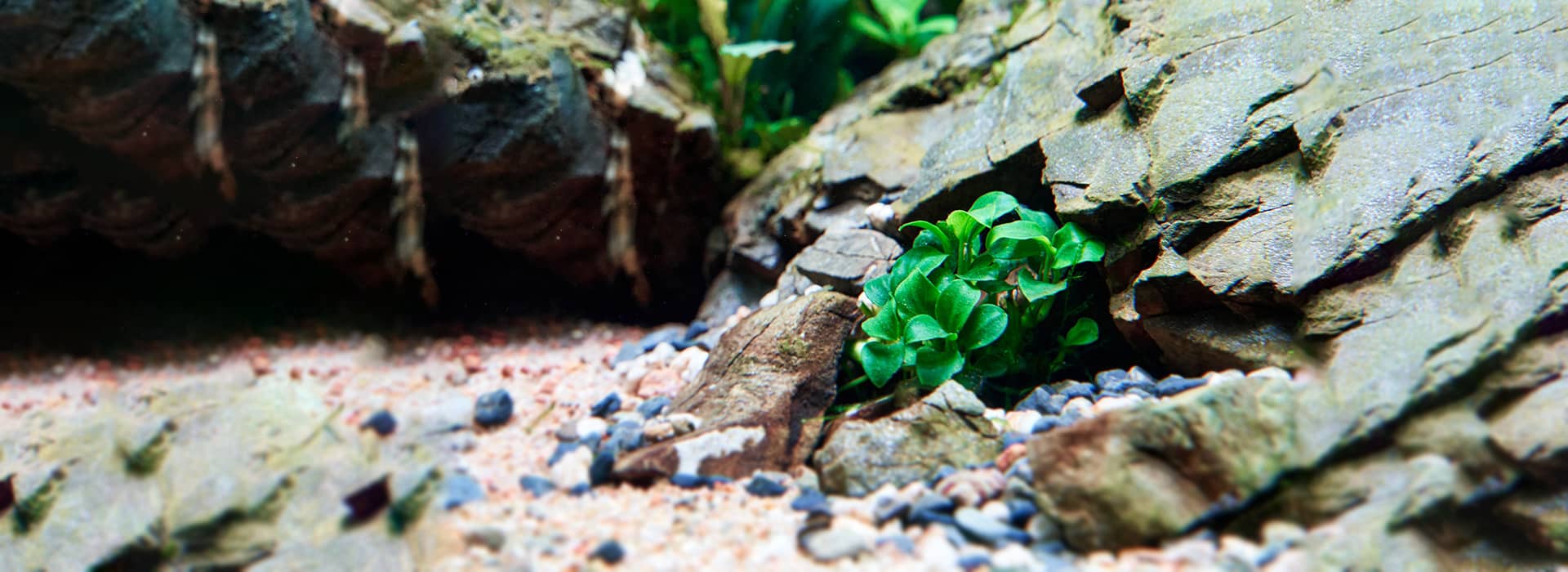Even simple aquascapes are beautiful and elegant in their own way. However, if you want to take it to the next level then an aquascape tree could be just what you are looking for. These intricately designed structures mimic the elegance of real trees, adding depth and beauty to your tank. Aquascape trees serve as focal points, providing hiding spots for fish and creating a three-dimensional aspect. Let’s look at how you can add one in your tank.
What Is An Aquascape Tree:
An aquascape tree is a decorative structure created in aquariums to resemble a tree found in nature. It involves using materials like driftwood or similar objects to construct the trunk and branches of the tree, while small aquarium plants are utilised to create the foliage.
To create the trunk and branches, driftwood is a great option as it provides a natural and realistic appearance. Driftwood is typically chosen for its unique shapes, gnarled textures, and weathered look.
Aquarium plants, such as Java Moss, Anubias, or Ferns, are then attached or grown on the driftwood to create the lush foliage of the aquascape tree. Java Moss, with its dense growth of small green leaves, is particularly popular for mimicking tree foliage. The plants can be attached to the driftwood using techniques like tying with thread or fishing line, or by using plant-safe adhesives.
As the aquarium plants establish themselves on the driftwood, they grow and spread, creating a beautiful and natural-looking canopy. However, keep in mind that this process takes time and patience.
How To Choose The Right Driftwood
Choosing the right piece of driftwood to create a “tree” in your aquascape can be a fun and creative process, but there are several things you’ll want to consider to make sure that you end up with a beautiful aquascape tree instead of something that looks obviously fake:
- Size: The size of the driftwood should be appropriate for the size of the aquarium. You want it to stand out as a centrepiece, but not overwhelm the tank or restrict the movement of your fish.
- Shape: Look for a piece of driftwood that naturally resembles a tree or branch structure. Driftwood with multiple branches extending from a central trunk is perfect. It should have a ‘tree-like’ appearance with branching sections that extend out, much like a tree’s branches would do.
- Safe for Aquatic Life: Make sure the driftwood is safe for use in an aquarium. It should be thoroughly cleaned and cured before placing it in the tank to remove any potentially harmful substances. It’s often a good idea to purchase driftwood from a reputable aquatic store or supplier.
- Aesthetics: If you are facing difficulty in settling on a particular driftwood, think about the look you want to achieve. Are you going for a dense, forested look? A solitary, majestic tree? Your choice of driftwood should reflect this.
- Aquatic Plant Compatibility: If you’re planning on attaching plants to the driftwood, such as Java moss or Anubias, make sure the driftwood has areas where plants can be securely attached.
- Weight: Ensure the driftwood is heavy enough to sink and remain stable in the tank, or be prepared to anchor it down. Driftwood that moves could potentially harm your fish or disturb your aquascape.
- Placement: Think about where the driftwood will be placed in your tank. This will affect the size and shape of the driftwood you choose. For example, if you’re placing it in the centre, a symmetrical piece might look best. I tend to pick something with a ragged and wild appearance with a lot of texture.
Once you’ve chosen your piece of driftwood, you can soak it in water for a few weeks to remove tannins (which can discolour your water) and to ensure it’s waterlogged and will sink in your tank. After this, you can attach any plants and then place the driftwood in your tank. It might take a little adjusting to get it just right, but with patience, you’ll have a beautiful aquascape tree.
How To Choose The Right Plants For The Aquascape Tree:
Choosing the right plants to complement your aquascape tree is the next important step. Here are some some pointers to keep in mind when selecting plants for your aquascape tree:
- Plant Size: Select plants that will fit well within the available space without overwhelming the tree structure or crowding the tank. Opt for plants with varying heights and growth patterns to create a natural and layered look.
- Foliage Shape and Colour: Look for plants with foliage that resembles the leaves of real trees. The shape, texture, and colour of the leaves should closely mimic tree leaves. For example, plants with small, round leaves like Java Moss can replicate the appearance of dense foliage, while ferns can provide feathery leaves.
- Growth Rate: Some plants grow quickly and require frequent trimming to maintain the desired shape and proportions of the aquascape tree. Slower-growing plants may require less maintenance and pruning.
- Compatibility with Lighting and Water Parameters: Ensure that the chosen plants are compatible with the lighting conditions and water parameters of your aquarium. Some plants thrive in low-light environments, while others require higher levels of light. The temperature, pH, and water hardness requirements of the plants should be manageable for you.
- Attachment Methods: Plants like Java Moss and Anubias can be tied or attached using fishing line or plant-safe adhesives. Check that the chosen plants are suitable for the attachment method you plan to use.
- Maintenance and Care: Evaluate the care requirements of the plants to ensure they align with your available time and expertise. Some plants may require frequent pruning, fertilisation, or specific care routines. Choose plants that fit your maintenance capabilities and can thrive in the conditions you can provide.
- Aesthetic Appeal: Select plants that contribute to the desired aesthetic of your aquascape tree. Factors such as colour contrast, leaf texture, and growth patterns will all decide how your aquascape tree eventually turns out.
Let’s look at some great plants perfect for an aquascape tree.
Best Plants For Aquascape Trees
The ideal plants for aquascape trees have tiny leaves, are easy to care for, do not need a substrate, and are easy to work with. Some examples include the following:
- Java Moss (Taxiphyllum barbieri): Java Moss is a versatile and hardy plant with small, dense, and vibrant green leaves. It can be attached to the branches of the aquascape tree to create a lush and dense foliage effect.
- Anubias (Anubias spp.): Anubias is another popular choice due to its broad, dark green leaves and slow growth. It can be attached to the tree structure and provides a more substantial and textured foliage appearance. Varieties such as the ‘petite’ or ‘pinto’ are great options.
- Ferns (Various species): Ferns, such as Java Fern (Microsorum pteropus) and Bolbitis Fern (Bolbitis heudelotii), are excellent choices for creating a feathery or frond-like foliage appearance on the aquascape tree.
- Bucephalandra (Bucephalandra spp.): Bucephalandra is a slow-growing plant with thick, leathery leaves and varying colours and patterns. It adds a unique and visually appealing element to the aquascape tree.
- Mini Pellia (Riccardia chamedryfolia): Mini Pellia is a moss-like liverwort that forms dense, bushy mats. It can be attached to the branches of the aquascape tree to create a more intricate and textured foliage look.
- Bolbitis (Bolbitis heudelotii): Bolbitis is a fern species known for its long, serrated leaves. It can be attached to the tree structure to create a more dramatic appearance.
- Vesicularia species (Christmas Moss, Weeping Moss, etc.): Vesicularia species of moss, like Christmas Moss or Weeping Moss, have cascading growth patterns that can be used to create a draped or cascading foliage effect on the aquascape tree.
- Hydrocotyle species (Hydrocotyle tripartita, Hydrocotyle sp. ‘Japan’, etc.): Hydrocotyle plants have small, round leaves and a creeping growth habit. They can be used to create a more carpet-like or ground-covering foliage appearance around the base of the aquascape tree.
These are just a few examples of plants that work well for aquascape trees. Look for plants that can get you the look you want while still being readily available and easy to care for.
Setting Up, Placing, and Arranging Aquascape Trees:
Now that we have all the background information, let’s get to actually setting up the aquascape tree. Here are some steps to guide you:
- Select the Aquascape Tree: Choose an aquascape tree that suits the size of your aquarium and aligns with your desired aesthetics just like I talked about earlier.
- Clean and Prepare the Tree: If using natural driftwood, ensure it has been properly cleaned and prepared for aquarium use. Remove any dirt, debris, or loose bark. Soak the driftwood if necessary to eliminate any impurities and tannins.
- Plan the Placement: Visualise how the aquascape tree will fit into your aquarium. Plan out the overall layout and arrangement of other elements such as rocks, substrate, and other plants. Decide on the tree’s position, whether it will be placed off-centre, in a corner, or as a centerpiece.
- Secure the Tree: Position the driftwood in the desired location within the aquarium. You can partially bury the base of the driftwood in the substrate to create stability.
- Attach Aquatic Plants: Enhance the tree’s appearance by attaching the aquatic plants you have chosen. Use fishing line or aquarium-safe adhesives to secure the plants to the branches or driftwood. Attach the plants to different sections of the tree to create a realistic foliage distribution.
- Create Depth and Layering: To achieve a more natural look, arrange plants with varying heights and growth patterns around the aquascape tree. Place taller plants towards the back or sides, and shorter plants towards the front. This layering creates depth and adds a sense of realism to the overall aquascape.
- Balance the Composition: Step back and assess the composition of the aquascape. Ensure the placement of the tree and surrounding elements creates a balanced and pleasing arrangement. Adjust the positioning of the tree or plants as needed to achieve the desired effect. Fill the tank up and set up all the equipment.
- Consider Lighting and Water Flow: Take into account the lighting requirements of the plants and the flow of water within the aquarium. Position the aquascape tree where it will receive suitable lighting and where water flow will not be obstructed. Adjust the aquarium’s lighting and filtration as necessary to accommodate the tree and plants.
- Maintenance and Adjustments: Regularly monitor the growth of the plants attached to the tree. Trim and prune as needed to maintain the desired shape and prevent overgrowth. Additionally, monitor the health of the plants and the tree itself, ensuring they remain free from algae or other issues.
Aquascape Tree Design Ideas:
Aquascape trees offer endless design possibilities to create captivating underwater landscapes. Here are some design ideas to inspire your aquascape tree:
- Bonsai-inspired Tree: Create an aquascape tree reminiscent of a bonsai tree by selecting driftwood with interesting branching patterns. Trim and shape the branches to achieve the characteristic bonsai look. Attach miniature mosses or small-leaved plants like Java Moss or Hemianthus callitrichoides (Dwarf Baby Tears) to create a lush foliage canopy.
- Mangrove Tree: Mimic the unique appearance of mangrove trees by selecting driftwood with tall, slender branches that branch out at the top. Position the tree near the back of the aquarium to create a vertical focal point. Attach small aquarium plants or mosses to the upper branches to represent the mangrove canopy.
- Driftwood Forest: Create an aquascape tree forest by using multiple pieces of driftwood of varying sizes and heights. Arrange them in groups or staggered formations to mimic a dense forest. Attach a mix of plants with different foliage types and heights to create a multi-layered and striking forest effect.
- Whimsical Fantasy Tree: Let your imagination run wild by crafting a fantasy-inspired aquascape tree. Use artificial tree structures with intricate designs that resemble fantastical creatures or mythical beings. Enhance the whimsical theme by attaching colourful plants, such as red or pink artificial plants, to create a vibrant and otherworldly look.
- Wabi-Kusa Tree: Explore the concept of wabi-kusa, which involves using small potted plants to create a tree-like structure. Select aquatic plants with tall, slender stems, such as Rotala or Ludwigia species, and arrange them in a cluster to resemble a tree trunk. Allow the stems to grow upwards, forming branches and foliage.
- Moss Tree Canopy: Create a dense and mossy tree canopy effect by attaching various mosses, such as Christmas Moss, Weeping Moss, or Flame Moss, to the branches of the aquascape tree. Allow the mosses to grow and drape downward, creating a lush and captivating canopy of greenery.
- Seasonal Tree: Emulate the changing seasons by incorporating plants with seasonal colour variations. For example, attach plants with red or orange foliage, such as Alternanthera reineckii ‘Mini’ or Ludwigia repens, to represent autumn colours. Use plants with lighter green or fresh growth for a spring or summer theme.
Let your creativity shine and personalise your aquascape tree to reflect your unique vision and style.
Maintenance and Care:
Proper maintenance and care are essential to ensure the longevity and health of your aquascape tree. Here are some tips to help you maintain and care for your aquascape tree:
- Prune and Trim: Regularly trim and prune the plants attached to the aquascape tree to maintain the desired shape and prevent overgrowth. Remove any dead or decaying plant matter to keep the tree looking tidy and healthy.
- Monitor Plant Health: Keep an eye on the health of the plants attached to the tree. Look for signs of nutrient deficiencies, disease, or pest infestation. Address any issues promptly by adjusting fertilisation, lighting, or implementing pest control measures as necessary.
- Lighting and Water Parameters: Ensure that your aquarium’s lighting and water parameters are suitable for the plants attached to the tree. Different plants have specific lighting and water requirements. Adjust your aquarium’s lighting intensity and duration, and monitor and maintain appropriate water parameters to support optimal plant growth.
- Algae Control: Algae growth can be a common issue in aquariums. Monitor the aquascape tree and surrounding areas for any signs of algae growth. Proper lighting, regular water changes, and maintaining a balanced nutrient level can help control algae growth. Consider adding algae-eating fish or snails to the tank as natural algae control.
- Fertilisation: Provide adequate nutrients for the plants attached to the aquascape tree. Use a high-quality liquid or substrate fertiliser specifically formulated for aquatic plants. Follow the instructions and dosage recommendations provided by the manufacturer to prevent overfertilisation, which can lead to algae problems.
- Water Changes: Regular water changes are important for maintaining overall water quality and preventing nutrient imbalances. During water changes, take care not to disturb the aquascape tree or its attachments. Use a siphon to remove debris and uneaten food from the substrate while minimising disruption to the tree’s arrangement.
- Cleaning: Occasionally clean the aquascape tree and surrounding areas to remove any accumulated debris or algae. Gently brush or rinse off any debris or algae growth on the tree structure without causing damage. Avoid using harsh cleaning agents or abrasive tools that can harm the plants or the tree itself.
- Consider Plant Growth: Monitor the growth of the plants attached to the aquascape tree. If the plants outgrow the desired proportions or block too much light, trim or relocate them to maintain balance and prevent overcrowding.
Is An Aquascape Tree Right For You?
Whether an aquascape tree is right for you depends on a few factors such as:
- Interest in Aquascaping: If you’re passionate about aquariums and creating underwater landscapes, then an aquascape tree might be a good fit. This is an advanced technique that requires knowledge and skill in maintaining aquarium plants.
- Time and Effort: Aquascaping, in general, requires time, patience, and a lot of maintenance. If you’re ready to put in the necessary effort to create and maintain a beautiful underwater scene, including pruning and shaping the “tree,” then you might enjoy an aquascape tree.
- Budget: An aquascape tree can be expensive especially if it is really intricate. Make sure to not overspend.
- Space: Aquascape trees usually require larger tanks to properly display their beauty. If you have a small tank, a tree might not be feasible.
- Skill Level: Creating an aquascape tree involves more advanced aquascaping skills. It involves creating a sense of scale and perspective, mastering plant care, and managing the overall health of your tank.
If all these aspects align with your interest, budget, time availability, and skill level, an aquascape tree could be a great addition to your home or office. It’s also a fantastic conversation starter and can bring a piece of nature inside.
FAQ
What is an aquascape tree?
An aquascape tree is a decorative structure, often made of driftwood or artificial materials, designed to resemble a tree within an aquarium. It adds a natural and visually captivating element to create the illusion of an underwater forest.
How do I choose the right driftwood for an aquascape tree?
When selecting driftwood, look for suitability, size, shape, surface texture, compatibility with water parameters, sourcing, treatment, durability, and visual appeal. Choose driftwood that is safe for aquarium use and complements the desired aesthetic of your aquascape tree.
Can I use live plants on an aquascape tree?
Yes, live plants can be attached to the aquascape tree to create a realistic foliage effect. Plants like Java Moss, Anubias, Ferns, and various moss species can be used to enhance the appearance of the tree and contribute to a more natural-looking underwater forest.
How do I attach plants to the aquascape tree?
Plants can be attached to the aquascape tree by using methods like tying with thread or fishing line or using aquarium-safe adhesives. Ensure that the attachment is secure but allows room for plant growth and expansion.
What are some popular plant choices for aquascape trees?
Some popular plant choices for aquascape trees include Java Moss, Anubias, Ferns, Bucephalandra, Vesicularia species (Christmas Moss, Weeping Moss), Hydrocotyle species, and Mini Pellia. These plants offer varying leaf shapes, colours, and growth habits that contribute to the overall aesthetics of the aquascape tree.
How do I arrange the aquascape tree and plants within the aquarium?
Create depth and layering by arranging plants of different heights and growth patterns around the tree. Step back and assess the overall arrangement to ensure it complements the rest of the aquascape.
What maintenance is required for aquascape trees?
Regular maintenance includes pruning and trimming plants to maintain the desired shape, monitoring plant health, ensuring appropriate lighting and water parameters, controlling algae growth, fertilising as needed, performing water changes, and occasional cleaning of the tree structure and surrounding areas.
Are aquascape trees suitable for beginners?
Aquascape trees can be enjoyed by aquarists of all levels, including beginners. However, it is recommended to research and understand the care requirements of the plants and tree materials you choose, as well as the skill level required.
Conclusion
Incorporating an aquascape tree in your aquarium is a fantastic way to transform it into a captivating underwater scene. By carefully selecting driftwood or artificial materials and attaching plants to create foliage, you can create a stunning focal point that mimics the beauty of nature. The aquascape tree adds depth, visual interest, and a sense of natural harmony to your aquatic environment.
Aquascape trees offer endless creative possibilities, allowing you to personalise your aquascape and bring your vision to life. The addition of an aquascape tree can elevate the aesthetics of your aquarium, providing a captivating and tranquil space for both you and your aquatic inhabitants.
So, dive into the world of aquascaping, unleash your creativity, and let your aquascape tree transport you to a tranquil underwater forest that will captivate both you and anyone who admires your aquarium. Enjoy the beauty and serenity of your very own underwater oasis!
